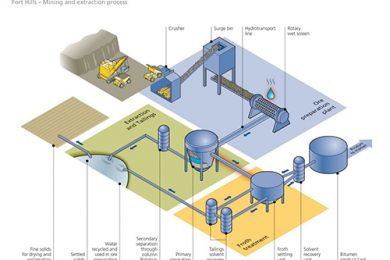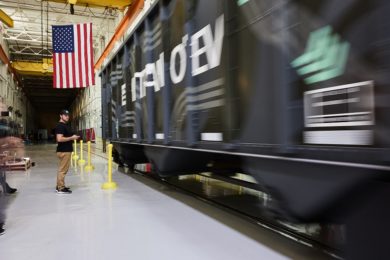Suncor, as operator of the Fort Hills Energy Ltd Partnership, has confirmed that during 2017, the mine, primary extraction, utilities and froth assets were commissioned. More than 80% of the Fort Hills plant is now operational and has safely run at full capacity through the test runs over the past four months. All three secondary extraction trains are mechanically complete with the first train in its final commissioning stage. First oil is expected in mid-January. The second and third trains are currently being insulated and expected to start up in the first half of 2018, as planned. Fort Hills remains on track to reach 90% capacity by the end of 2018.
The Fort Hills partners have resolved a previously announced commercial dispute. Suncor and Teck Resources Ltd have each acquired an additional working interest in the Fort Hills project from Total E&P Canada (Total).
Suncor’s share of the project has increased from 50.8% to 53.06% and Teck’s share has increased from 20% to 20.89%. Total’s share has decreased from 29.2% to 26.05%. Suncor and Teck have funded an increased share of the project capital, in the amounts of approximately C$300 million and C$120 million respectively, commensurate with the additional working interests, which may be further adjusted in accordance with the terms of the Fort Hills partnership agreement, as amended, based on the parties’ respective contributions to project costs.
Fort Hills’ open-pit mine plan has two main pits and a mine fleet capable of sustaining a production of 14,500 t/h of oil sand.
The mine delivers oil sands feed to two ore crushing plants, where oil sand material will be crushed and processed. Ore from the crushing plants is mixed with warm water and conditioned to create slurry, which is then transported to primary extraction via three hydrotransport lines.
In primary extraction, the conditioned oil sands slurry is fed to two trains of separation cells. The separation cells remove the bitumen from the sand, which yields a froth mixture of bitumen, water and clay.
Froth is then sent for further treatment in secondary extraction where it is mixed with solvent and sent through two stages of counter-current settlers to remove asphaltenes and excess sand and water. The bitumen is then sent to a solvent recovery unit to remove the solvent and prepare the bitumen for shipping. The final product is marketable bitumen.
The heavy asphaltenes, sand and remaining water from the settlers travel through a tailings solvent recovery unit (TSRU) to remove any remaining solvent and prepare the tailings for disposal in the out-of-pit-tailings area (OPTA).










